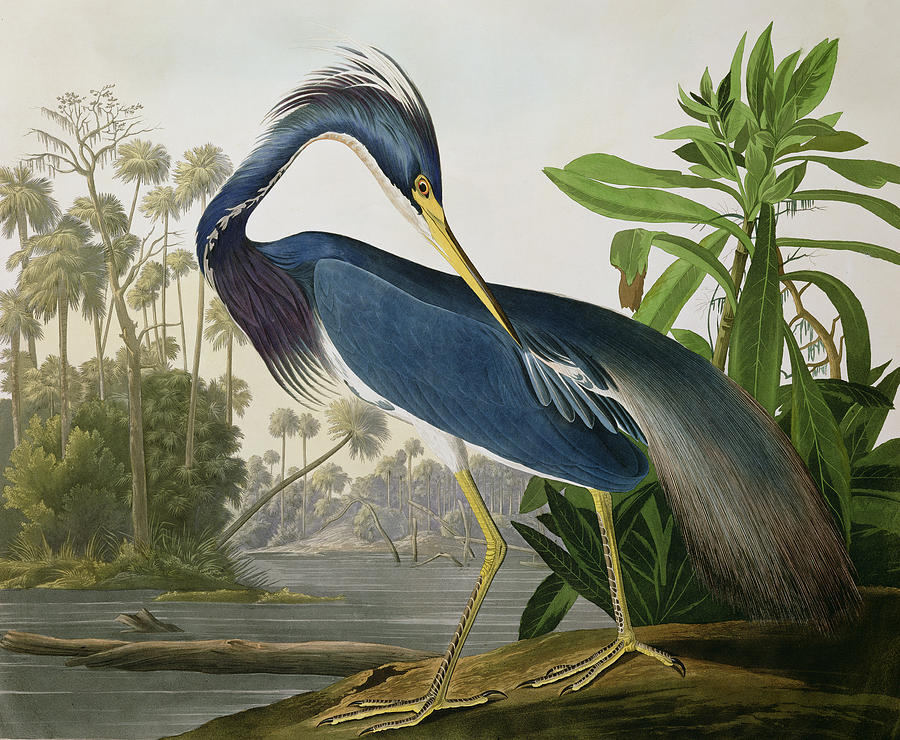John James Audubon, Louisiana Heron, 1827-1838
25.75 x 20.75 in.
John James Audubon (1785-1851) is well known as an American painter, ornithologist and naturalist, as well as the namesake of the National Audubon Society. Audubon was committed to painting American birds in their natural habitats was revolutionary and his book, Birds of America, is still considered one of the great examples of nature painting and book art. Published in sections between 1827 and 1838, the book contains hand-colored, large-scale depictions of a wide variety of birds, including six now extinct birds. He also discovered twenty-five new species and twelve subspecies. Audubon's contributions to understandings of bird anatomy and behavior have been monumental. The book includes over four hundred plates, such as the Wild Turkey, the American Flamingo, and the Great Grey Owl. He also painted some studies of other animals. Audubon's paintings are not only scientifically important, but artistically remarkable. His commitment to accurate portrayals of these animals resulted in fascinating and beautiful images that convey a great deal about the subjects. The painting of the Louisiana Heron was actually chosen as the original cover for the book, and remains so on many editions. This piece is especially effective at communicating the habitat and character of this bird. The heron (now called the tricolor heron) appears majestic, yet simple. The richness of Audubon's colors and the deftness of his brushwork are on display here. He devotes as much careful attention to the ground, water, and foliage as he does to the bird itself. With many small, precise brushstrokes, Audubon successfully depicts the bird's deep blue plumage and musculature. The bird seems to be looking right at us with its piercing orange eye, making it seem present and alert.

No comments:
Post a Comment